Key takeaways
- RescueTime provides insightful data on time management, helping users identify productivity patterns and distractions.
- The tool fosters self-accountability and motivation through gentle reminders and goal-setting features, enhancing focus without pressure.
- Incorporating RescueTime into life coaching promotes honest self-reflection, turning vague frustrations into actionable insights for clients.
- Awareness of time habits, balanced work breaks, and small adjustments lead to sustainable productivity improvements and better life management.
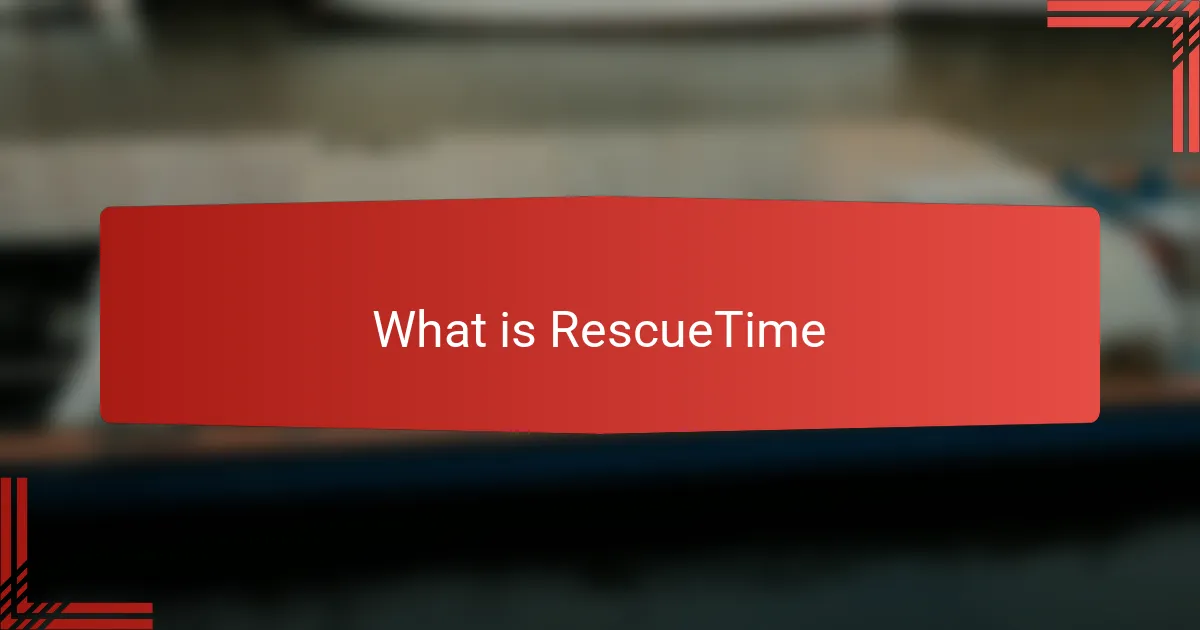
What is RescueTime
RescueTime is a digital tool designed to track how you spend your time on your computer or mobile device. At first, I wasn’t sure if I wanted an app monitoring every click, but it turned out to be eye-opening. Have you ever wondered where your hours really go during the day?
What makes RescueTime stand out for me is its ability to categorize activities automatically, showing not just raw numbers but how productive or distracting those activities are. This insight helped me recognize my sneaky habit of wasting time on social media more than I realized. It’s like having a personal coach gently pointing out where you can improve without judgment.
I’ve found that RescueTime’s reports don’t just present cold data; they invite reflection. Seeing the weekly trends made me more mindful about how I use my time and motivated me to set clearer boundaries. It’s a subtle but powerful nudge towards better productivity that I didn’t expect to need, but now can’t imagine working without.
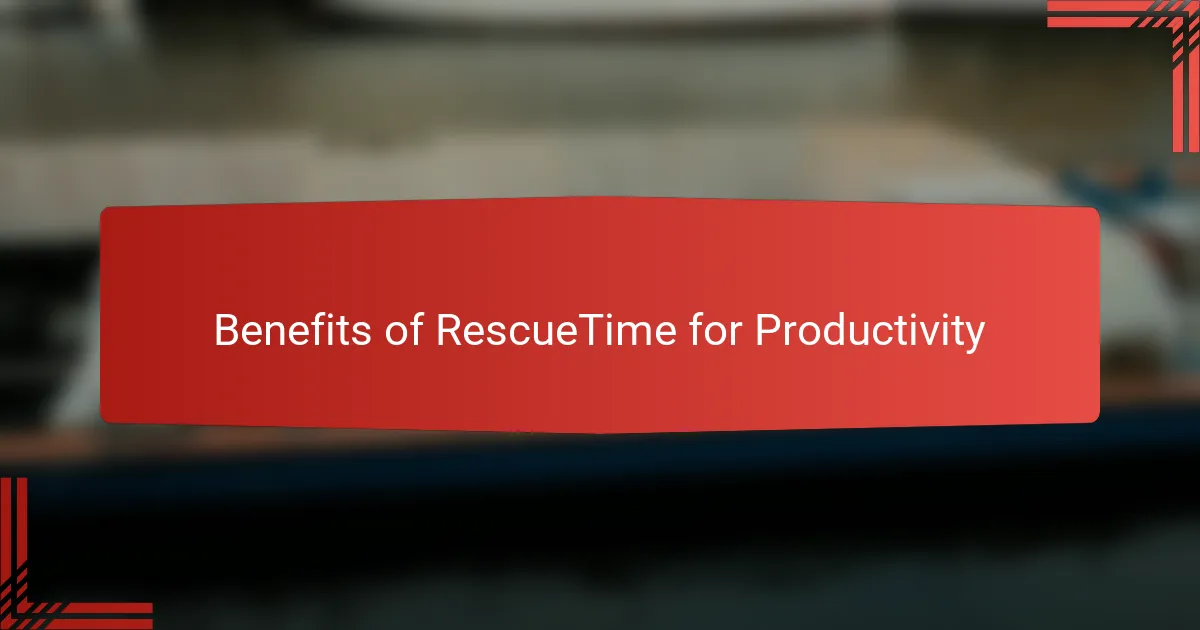
Benefits of RescueTime for Productivity
One of the biggest benefits I noticed with RescueTime is how it helped me regain control over my day. Instead of guessing when I was most productive, the app showed me exactly which hours I was in the zone—and which I was merely spinning my wheels. Have you ever felt like time just slipped away without real progress? RescueTime answered that question for me, and that clarity was game-changing.
Another thing I appreciate is how RescueTime kept me honest. It’s easy to think we’re being productive when we’re really multitasking or getting distracted. But seeing concrete evidence of time spent on distracting websites made me confront my own habits. That realization sparked a kind of self-accountability I didn’t expect but definitely needed.
Finally, I’ve noticed that RescueTime doesn’t just track; it empowers. The gentle reminders and goal-setting features encouraged me to shift my work patterns without feeling pressured or overwhelmed. I found myself naturally gravitating toward focused work periods because I could see the results in real time. Have you experienced that satisfying feeling when small changes lead to big improvements? RescueTime made that journey feel achievable and even enjoyable.

Community Life Coaching Overview
Community life coaching, in my experience, is about more than just setting goals—it’s about building a network of support and shared growth. Have you ever felt stuck trying to change a habit alone? That’s exactly where community coaching shines; it creates a space where encouragement and accountability happen naturally among people with similar aspirations.
What resonates with me most is how the collective energy helps maintain motivation. When you see others making progress, it sparks a sense of possibility and trust in your own journey. I remember thinking, if they can do it, maybe I can too—and that alone was a powerful catalyst for change.
The beauty of community life coaching lies in its adaptability. Whether you’re chasing productivity, happiness, or balance, it adjusts to your unique path while rooting you in shared experiences. This combination of personal focus and group support is what makes it feel less daunting and more inspiring every step of the way.
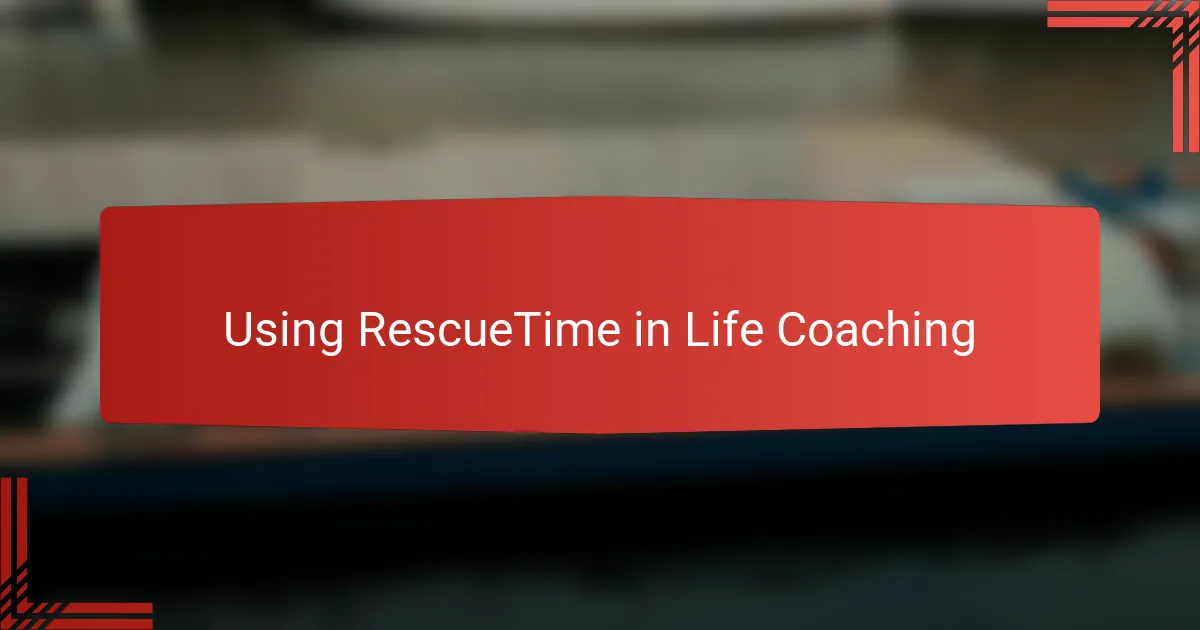
Using RescueTime in Life Coaching
Using RescueTime in life coaching brings a new layer of clarity that profoundly shifts how clients view their daily habits. When I introduced it in sessions, I noticed people often had a “aha” moment seeing their actual time patterns laid bare. Have you ever tried explaining your day only to feel like words fall short? RescueTime fills that gap with undeniable data.
What struck me most was how RescueTime acts as a catalyst for honest self-reflection within coaching conversations. Clients moved beyond vague frustrations about “wasting time” to concrete realizations about when distractions sneak in. From my experience, this transforms coaching from abstract advice to actionable insight that clients can own fully.
Integrating RescueTime didn’t just help track time; it built a bridge to accountability that felt supportive rather than punitive. I recall one client who felt overwhelmed before, but after reviewing their RescueTime report together, they gained a sense of control and motivation to adjust habits. Isn’t that the kind of shift we hope for in life coaching?
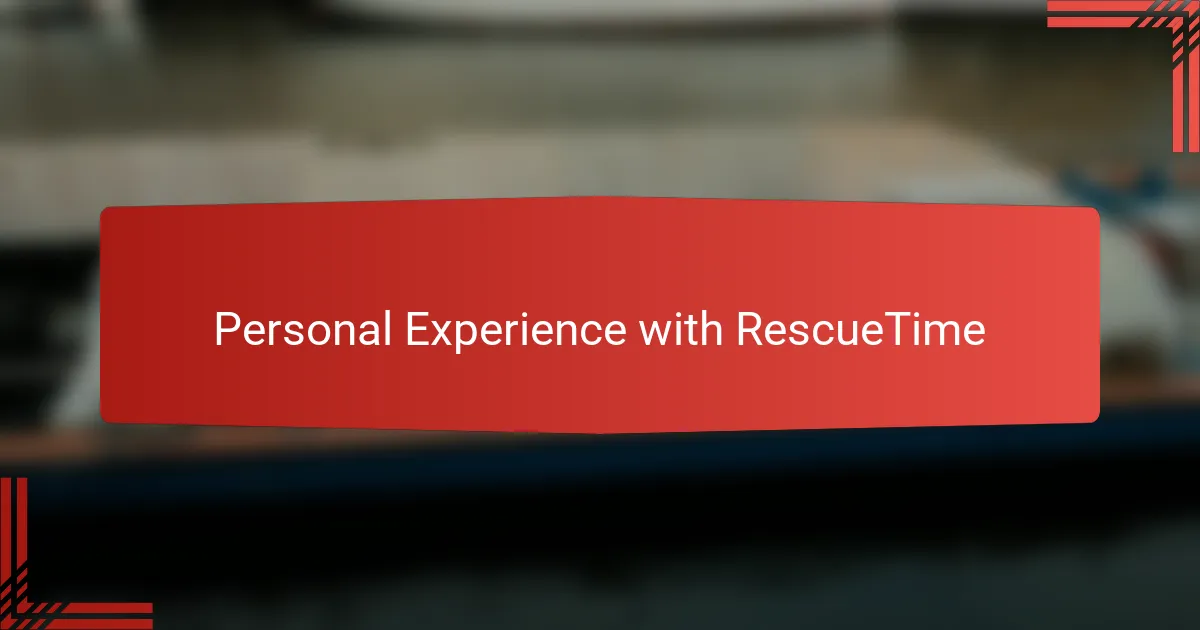
Personal Experience with RescueTime
At first, I was hesitant to let RescueTime track every detail of my day, but quickly realized how much I’d been underestimating my distractions. Have you ever been surprised by how much time slips away unnoticed? Seeing the actual numbers felt like a wake-up call I didn’t know I needed.
One moment that sticks with me is when RescueTime showed that my supposed “quick social media check-ins” actually added up to over an hour each day. That was a bit painful to admit but also incredibly motivating. It made me rethink how I structured breaks and what true downtime really meant.
What I appreciate most is how RescueTime gently nudged me toward better habits without feeling like a strict watchdog. Instead of guilt, it sparked curiosity about my own patterns and a desire to experiment with focus. Has a tool ever made productivity feel less like a chore and more like a personal challenge? For me, RescueTime did exactly that.
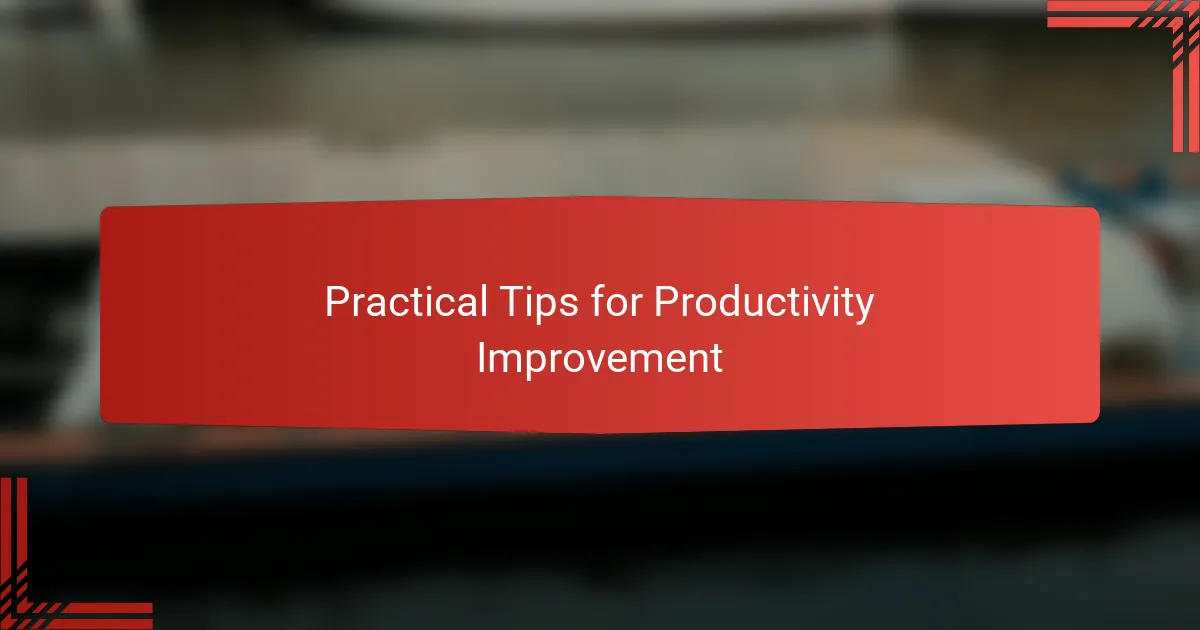
Practical Tips for Productivity Improvement
One tip I found invaluable was setting clear daily goals within RescueTime. I remember one hectic morning when I decided to limit distracting websites to just 15 minutes. Seeing that countdown in real time made me more intentional about staying focused. Have you ever noticed how a small, clear target can transform an overwhelming day into manageable chunks?
Another practical approach is using RescueTime’s alerts to create micro-breaks. Instead of pushing through fatigue, I started paying attention when the app nudged me after long stretches of work. Those short pauses actually boosted my energy and kept me productive longer. It made me rethink the way I used breaks—not as interruptions, but as tools for sustained focus.
Lastly, regularly reviewing your weekly reports can be a game changer. I like to set aside a few minutes every Sunday to reflect on my time patterns. This habit helped me identify trends, like which afternoons I’m prone to distraction, so I could plan heavier tasks for my prime hours. When was the last time you took a moment to truly understand how your time flows? RescueTime made that process simple and surprisingly insightful for me.
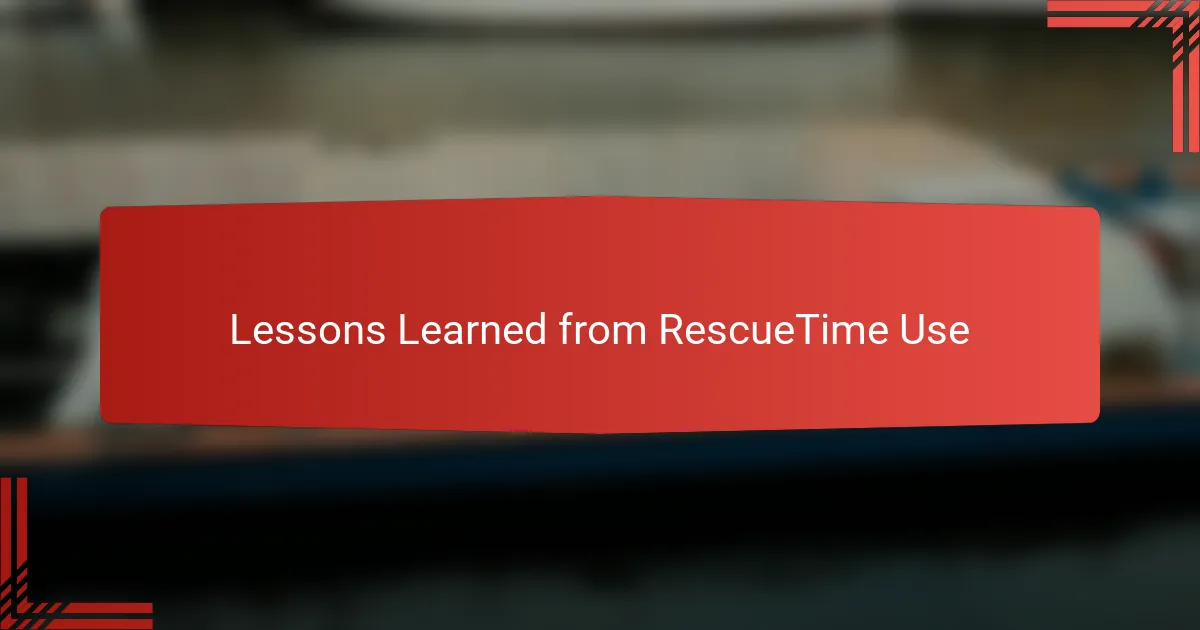
Lessons Learned from RescueTime Use
Using RescueTime taught me that awareness really is the first step to change. I used to assume I was moderately productive, but the app revealed hidden pockets of distraction I hadn’t noticed before. Have you ever felt blindsided by how much time social media or random browsing can steal from your day? That eye-opening realization made all the difference for me.
Another lesson was about balance. RescueTime showed me that pushing through without breaks led to burnout more than accomplishing goals. When I started paying attention to my energy patterns and allowing myself meaningful pauses, my focus actually improved. It surprised me how much more sustainable productivity felt once I stopped forcing nonstop work.
Finally, I learned that small shifts create lasting habits. Instead of trying to overhaul my entire routine, RescueTime encouraged me to experiment with tiny adjustments—like blocking distracting sites during key hours or setting short daily goals. These manageable changes built momentum and made productivity feel achievable, rather than overwhelming. Have you tried breaking big goals into bite-sized steps? For me, RescueTime made that approach click in a way I hadn’t experienced before.